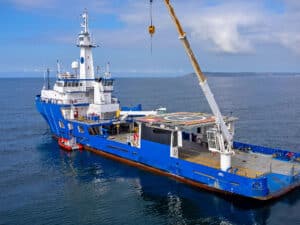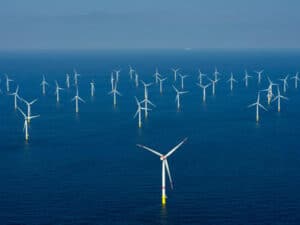
CBO: Shipbuilding plan will cost more than Navy says
Written by Nick Blenkey OCTOBER 22, 2013 — No surprise here: The Congressional Budget Office estimate of the cost of new-ship construction in the Navy’s 2014 shipbuilding plan is higher than the Navy’s.
OCTOBER 22, 2013 — No surprise here: The Congressional Budget Office estimate of the cost of new-ship construction in the Navy’s 2014 shipbuilding plan is higher than the Navy’s.
The CBO’s number is $76 billion, or 15 percent, higher than the Navy’s estimate.
The CBO estimate is given in a new report, An Analysis of the Navy’s Fiscal Year 2014 Shipbuilding Plan, that also finds that the total costs of carrying out the 2014 plan—an average of $21 billion per year over the next 30 years—would be one-third higher than the funding amounts the Navy has received in recent decades.
The Navy’s 2014 plan would also fall short of meeting the service’s inventory goals for some types of ship, says CBO.
CBO notes that, at the direction of the Congress, the Department of Defense (DoD) generally issues annual reports that describe its plan for building new ships over the next 30 years. DoD submitted its 2014 shipbuilding plan to the Congress in May 2013, covering fiscal years 2014 to 2043. The 2014 plan reflects the Navy’s most recent goals for battle force ships—goals that were developed in 2012 and outlined in a report to the Congress in January 2013; that analysis is hereafter referred to as the 2012 force structure assessment. The goals developed in 2012 were slightly different from the ones that were outlined in the 2005 force structure assessment and were reflected in the Navy’s shipbuilding plans up through last year.
The 2013 and 2014 shipbuilding plans are very similar, but not identical, with respect to the Navy’s total inventory goal (in military parlance, its requirement) for battle force ships, the number and types of ships the Navy would purchase over 30 years, and the proposed funding to implement the plans. CBO examined the 2014 plan in detail and estimated the costs of the proposed ship purchases using its own estimating methods and assumptions. CBO also analyzed how those ship purchases would affect the Navy’s inventories of various types of ships over the next three decades.
The total costs of carrying out the 2014 plan—an average of about $21 billion in 2013 dollars per year over the next 30 years—would be one-third higher than the funding amounts that the Navy has received in recent decades but slightly less than the costs of the 2013 plan, CBO estimates.
Inventory Goals
The Navy’s 2014 shipbuilding plan states that the service’s goal for its inventory of battle force ships is 306 ships. That goal reflects the Navy’s 2012 force structure assessment and is slightly smaller than the goal of 310 to 316 ships specified in the 2013 plan and the goal of 313 ships that resulted from the 2005 force structure assessment. However, the goal of 306 ships is greater than the Navy’s current number of ships; at the end of 2013, the Navy’s battle force fleet will consist of 285 ships.
The Navy’s shipbuilding plan would fall short of meeting the service’s inventory goals for some types of ships. For example, the plan would fail to meet the goal of 88 large surface combatants (destroyers and cruisers) in 2030 and beyond. Moreover, the Navy assumes in its plan that most of its destroyers will serve for 40 years, even though the Navy’s large surface combatants have typically served for 30 years or less. If the current destroyers serve for only 35 or 30 years, the shortfall in large surface combatants would be more than twice as large as projected in the Navy’s plan.
Purchasing Plan
Under the 2014 plan, the Navy would buy a total of 266 ships over the 2014–2043 period: 220 combat ships and 46 combat logistics and support ships. Given the rate at which the Navy plans to retire ships from the fleet, that construction plan would not achieve a fleet equal to the inventory goal of 306 ships until 2037. The 2013 shipbuilding plan called for the purchase of 2 more ships over 30 years, but because the Navy’s inventory goal was 4 to 10 ships higher in 2013, that year’s plan would have fallen even further short of the goal.
Costs
The Navy estimates that buying the new ships as specified in the 2014 plan would cost $504 billion over 30 years, or an average of $16.8 billion per year. (Unless otherwise indicated, all dollar amounts in this report reflect budget authority in 2013 dollars.) Those figures are solely for the construction of new ships—the only type of costs reported in the Navy’s 30-year shipbuilding plans. Other activities typically funded from the Navy’s budget accounts for ship construction—such as refueling nuclear-powered aircraft carriers and outfitting new ships with various small pieces of equipment after the ships have been built and delivered—would, in CBO’s estimation, add $1.9 billion to the Navy’s average annual shipbuilding costs under the 2014 plan. (Between 2009 and 2013, the cost of those other activities averaged $1.9 billion per year.) Including those extra costs, the average cost of the Navy’s 2014 plan is $18.7 billion per year, slightly less than the cost of the 2013 plan.
Using its own models and assumptions, CBO estimates that the cost of new-ship construction in the Navy’s 2014 plan would total $580 billion over 30 years, or an average of $19.3 billion per year. Generally, CBO estimates the cost of a future ship on the basis of the relationship between the weight and cost of analogous ships. The resulting figure is then adjusted for factors such as the number of ships of the same type being built at a given shipyard; production efficiencies that occur as more ships of the same class are produced simultaneously; and the fact that the costs of labor and materials have generally risen faster in the shipbuilding industry than in the economy as a whole, which generates growth in the inflation-adjusted cost of a given ship over time. Including the costs of refueling aircraft carriers and other items, such as outfitting new ships, raises the overall average cost of the Navy’s plan to $21.2 billion per year, CBO estimates. That figure is slightly less than CBO’s estimate of the average annual cost of the Navy’s 2013 plan.
CBO’s estimate of the cost of new-ship construction in the Navy’s 2014 shipbuilding plan is $76 billion, or 15 percent, higher than the Navy’s estimate. Specifically, CBO’s estimate is 6 percent higher than the Navy’s for the first 10 years of the plan, 14 percent higher for the following decade, and 26 percent higher for the final 10 years. Two factors explain most of the differences between the two estimates. First, the Navy and CBO used different estimating methods and assumptions regarding the designs and capabilities of future ships. Second, the Navy, in contrast with CBO, does not appear to have accounted for the fact that costs of labor and materials have traditionally grown faster in the shipbuilding industry than in the economy as a whole; that difference produces a widening gap between the two estimates over time.
Costs of the Plan Compared with Historical Funding
If the Navy receives the same amount of funding (in constant dollars) for new-ship construction in each of the next 30 years that it has on average over the past three decades, it will not be able to afford all of the purchases in the 2014 plan. CBO’s estimate of $19.3 billion per year for new-ship construction in the Navy’s 2014 shipbuilding plan is 38 percent above the historical average funding of $14.0 billion. And CBO’s estimate of $21.2 billion per year for the full cost of the plan is 34 percent higher than the $15.8 billion the Navy has spent on average per year for all items in its shipbuilding accounts over the past 30 years.
The Effect of the Budget Control Act of 2011 on Navy Ship Programs
The Navy’s 2014 shipbuilding plan, like its 2013 plan, does not address the caps on defense funding from 2014 to 2021 that stem from the Budget Control Act of 2011 (BCA) as amended by the American Taxpayer Relief Act of 2012. Because this report provides CBO’s analysis of the costs of the Navy’s plan, it also does not incorporate those caps.
If the BCA is left in place, however, it will probably have three effects on the Navy’s shipbuilding plan. First, the sequestration of appropriated funds in 2013 required the Navy to slow or alter elements of its shipbuilding programs that were under way. So far, however, the Navy has not canceled any ship purchases because of insufficient funding. Second, the Congress provided authority and some funding to purchase a third destroyer in 2013, one more than in the Navy’s 2013 request. The BCA’s funding caps may prevent the purchase of that ship if the Navy is unable to secure additional funding for it in 2014. Third, funding for new-ship construction will probably be well below the amounts required for the 2014 shipbuilding plan, unless such funding is protected at the expense of funding for other military activities. Specifically, if the Navy receives the same percentage of DoD’s budget during the coming decade and devotes the same percentage of its budget to ship construction as it has historically, the shipbuilding budget would be 30 percent below CBO’s estimate of the amount required by the Navy’s 2014 shipbuilding plan.
Read the entire report HERE





Leave a Reply
You must be logged in to post a comment.